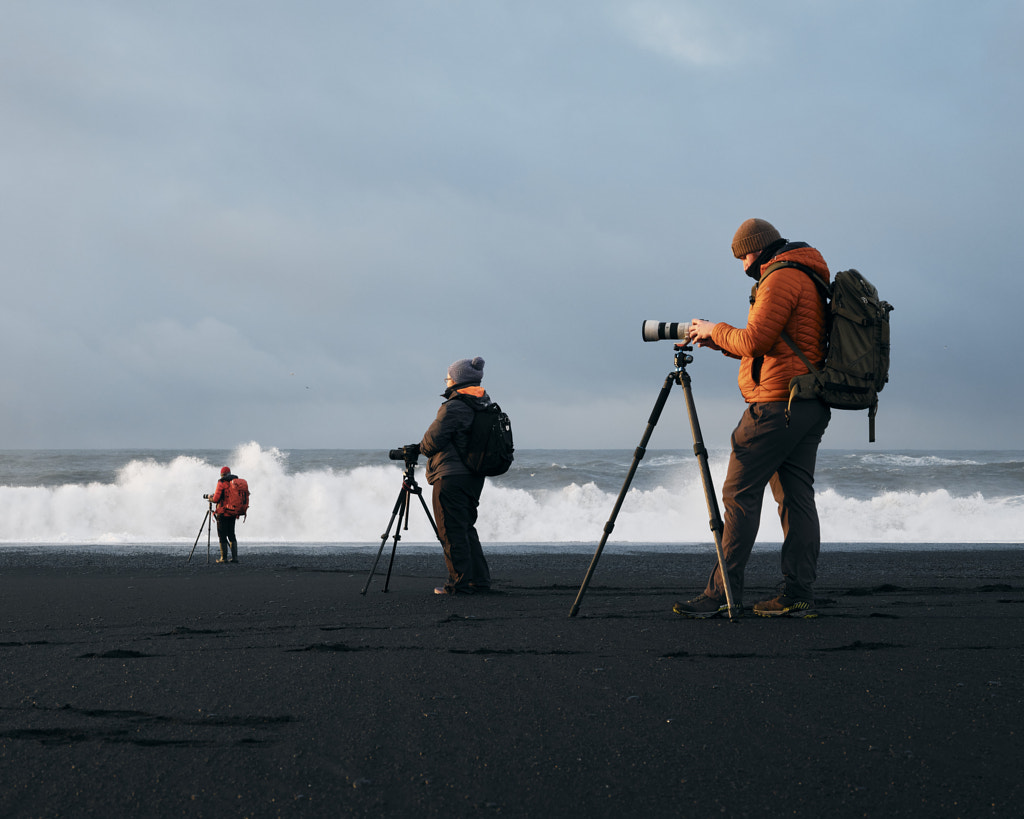This blog post is written by the team at The Photographer Mindset.
If you’re just stepping into the world of photography or you’re looking to turn your hobby into a source of income but don’t have many connections or clients, then this blog post is for you. It can be tricky to get your foot in the door without any already existing clients. It’s the same as applying to any other job you when have no prior experience or history. It’s tough!
However, in this blog post, we’re going to cover how to build a portfolio that speaks for itself from scratch, and that will start attracting paying clients. With a little know-how and some creative thinking, you can put together a portfolio of images that will showcase your talent and skills so that clients can have confidence in your ability to deliver for them.
Go through all of your existing photos and see if any have commercial value or appeal
If you’ve been shooting for a while, you likely have an archive full of photos from your personal life, vacations, other outings, and that may include products. Take some time to go through your archives to find gems that could show off your skills as a commercial photographer. More importantly, look for images that you could envision popping up on your phone as an advertisement or images you could see looking good on a company website. Even seemingly mundane shots could have interesting narratives that are sure to catch the eye of potential clients looking at your portfolio.
Realize that what performs well on Instagram as a “banger” isn’t usually what companies and brands are looking for. A kid’s clothing company for example could care less about an epic landscape photo of the Alps. My point is that if you’ve trained your eye to only look for epic Instagram-worthy images, you may have missed some great shots in your archives that potentially hold tremendous commercial value. Once you’ve identified these specific images, star them or save them for later as you are going to put them to use.
Spend a month photographing different things that you consistently use or are passionate about
If you feel like you don’t have enough images to create a good-looking website or portfolio after digging through your archives, it’s time to get to work. At The Photographer Mindset, we can confidently say that you can build a diverse and impressive photography portfolio in a month or less if you take a couple of hours here and there throughout the weeks to photograph objects or activities that you uniquely use or do.
Shooting objects or activities that you are familiar with, that bring you utility, or that excite you is crucial. Don’t just shoot anything around the house. This is important for a few reasons:
- You will be more invested and excited to showcase these products or activities the best way you can because you enjoy using them or doing them.
- You will be much more familiar with what you’re shooting, meaning you’ll know what angles, environments, and usages make sense. This will come across with better-finished photographs.
- You have easy access to these items or activities for zero additional cost.
For example, if I’m indoor rock climbing with a friend, maybe I bring my camera there and ask the owners if I can take some photos. I could double down and ask my climbing partner to wear some specific athletic apparel which I could also photograph. My point is I already like the activity, I’m familiar with it, and I know what would make sense technically to make an appealing image.
Choose a selection of your best shots and create a portfolio or website to showcase them
Once you’ve gone through your archives and photographed some products or activities you frequently use or do, it’s time to digitally showcase your skillset. You can either create a website or if money is tight, an aesthetically designed PDF of your work. I love to use Canva as they have many great templates for photography portfolios at zero cost. If that’s still too much technical prowess, you can create an organized Google Drive folder or Dropbox folder of your diverse range of work.
Be sure to not just lazily throw 100 photos into a drive. Consider labeling them by genre or by industry so that when you go to send this drive to a prospective client, they can easily navigate to images that are closest to what their business is selling. The same goes for your PDF and website. Be sure to organize your portfolio in a way that makes sense and is organized.
We recommend building a website as your first choice as it displays an unmatched level of professionalism, however, PDFs and drive folders allow you to custom-tailor images to specific businesses and brands much more fluidly.
Consider taking on free work if it makes sense for your development and future
We did another blog post titled: “Should you Work for Free as a Photographer? A Comprehensive Guide“. You should give that article a read when you’re done here as it weighs the pros and cons of doing free work as well as when it makes sense to take on unpaid work. I’ll briefly summarize in this context why taking on SOME free work may make sense for you as someone with a limited portfolio.
Now before people go crazy reading that, please understand certain situations make total sense for unpaid work. For example, if you want to add an awesome company or brand to your portfolio or website but it is unlikely they will pay you due to your experience level, it may make sense to do some free work.
Why? Let me ask you this. Would the value gained from being able to put that company or project on your resume outweigh the value you would receive by not performing the gig at all or for little money? In other words, would the company look so good on your resume that working for free would be worth it because it is likely that that unpaid photography job specifically would help you acquire future paid jobs? If the answer is yes, and you’re someone with little to no clients, consider this option.
The other thing to consider is that the company may be able to offer you a product in exchange for your photography services. If the product is something that would be useful to you or something you would buy with your own money, consider taking that job. It will build your portfolio, start a connection with a brand, and allow you to acquire a useful product to improve the functionality of your life. Just be smart when trading photos for products. Consider the retail value of the product and what that is worth in images. in other words, don’t offer 20 photos for a $40 Bluetooth speaker.
Build your portfolio’s diversity by taking on projects of all kinds
Now obviously it is important to say “no” to jobs that are unfairly paid or that go against your values. Just don’t turn down jobs for the wrong reasons. Supplement your portfolio with diversity.
Conclusion
With these steps, you can start building an impressive portfolio of work from the items you already own, from free work that makes sense, and from your archived photos. You can build that good-looking portfolio in no time and start pitching clients for paid photography jobs!
Not on 500px yet? Sign up here to explore more impactful photography.
The post How to Build a Professional Photography Portfolio with Zero Clients appeared first on 500px.






